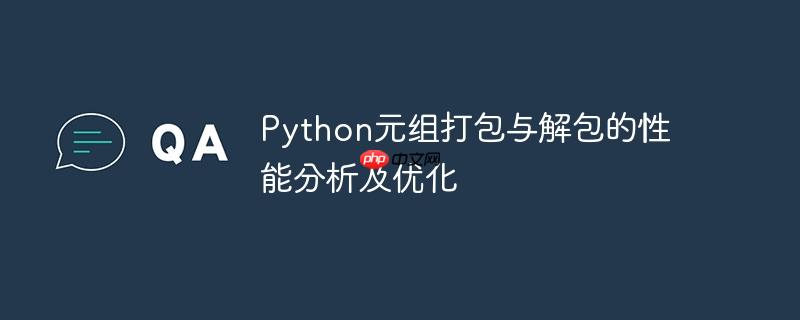
正如摘要所述,本文将深入探讨Python中使用元组进行堆栈操作时的性能差异。我们将分析两种不同的堆栈实现方式,揭示频繁创建和扩展元组的性能瓶颈,并提供一种基于列表的更高效的堆栈实现方案。
在Python中,元组是一种不可变序列,经常用于数据打包和解包。然而,在某些场景下,不恰当的使用元组可能会导致性能问题。下面我们通过一个例子来分析这种性能差异。
考虑以下两种堆栈的实现方式:
from time import time
class StackT:
def __init__(self):
self.stack = tuple()
def push(self, otheritem):
self.stack = (*self.stack, otheritem)
def pop(self):
*self.stack, outitem = self.stack
return outitem
class Stack:
def __init__(self):
self._items = None
self._size = 0
def push(self, item):
self._items = (item, self._items)
def pop(self):
(item, self._items) = self._items
return item
def timer(func):
def wrapper(*args, **kwargs):
print("starting count.")
now = time()
result = func(*args, **kwargs)
print(f"counted {time() - now} seconds")
return result
return wrapper
@timer
def f(cls, times):
print(f"class {cls.__name__}, {times} times")
stack = cls()
for i in range(times):
stack.push(i)
for i in range(times):
stack.pop()f(StackT, 100_000) f(Stack, 100_000) # starting count. # class StackT, 100000 times # counted 63.61870002746582 seconds # starting count. # class Stack, 100000 times # counted 0.02500009536743164 seconds
StackT 类使用元组的拼接 (*self.stack, otheritem) 和解包 *self.stack, outitem = self.stack 来实现堆栈的 push 和 pop 操作。 每次 push 操作都会创建一个新的元组,并将旧元组中的所有元素复制到新元组中,这是一个 O(n) 的操作。 进行 n 次 push 操作的时间复杂度为 O(n^2)。
立即学习“Python免费学习笔记(深入)”;
Stack 类使用嵌套元组来实现堆栈。 每次 push 操作只是创建一个新的元组,指向前一个元组,这是一个 O(1) 的操作。
从上面的测试结果可以看出,StackT 的性能明显低于 Stack。
优化方案:使用列表
由于元组的不可变性导致频繁的创建和复制操作,因此在需要动态修改序列时,应优先考虑使用列表。列表是可变的,可以高效地进行插入和删除操作。
下面是一个基于列表的堆栈实现:
class StackL(list):
def push(self, item):
self.append(item)
def pop(self):
return self.pop() # 修正:使用list的pop方法
@property
def size(self):
return len(self)这个 StackL 类继承自 list,并使用 append 和 pop 方法来实现堆栈的 push 和 pop 操作。 列表的 append 和 pop 操作的时间复杂度通常为 O(1)。
总结与注意事项
通过选择合适的数据结构,我们可以显著提高代码的性能,从而提升程序的整体效率。 在本例中,使用列表代替元组可以大大提高堆栈操作的性能。
以上就是Python元组打包与解包的性能分析及优化的详细内容,更多请关注php中文网其它相关文章!

Copyright 2014-2025 https://www.php.cn/ All Rights Reserved | php.cn | 湘ICP备2023035733号